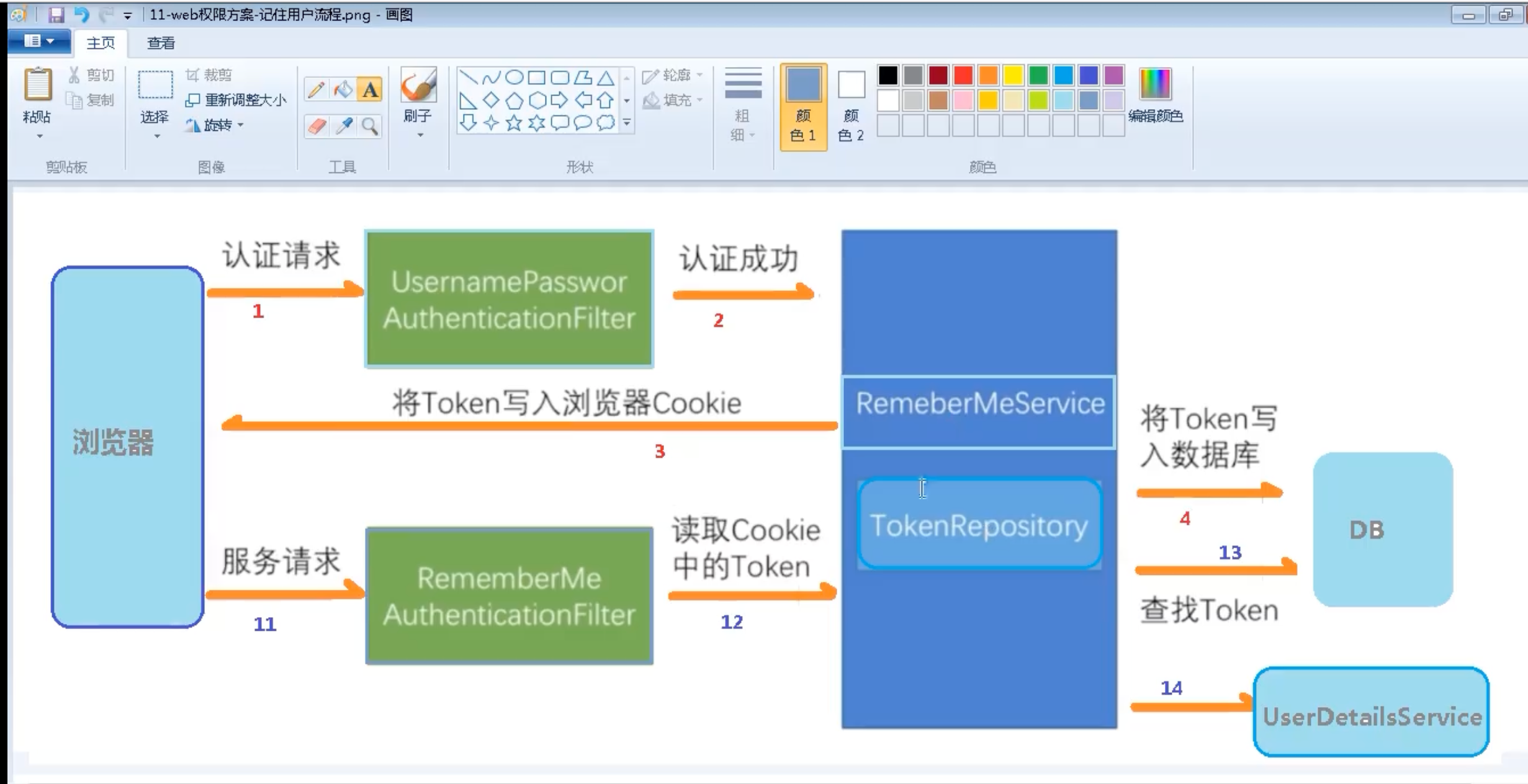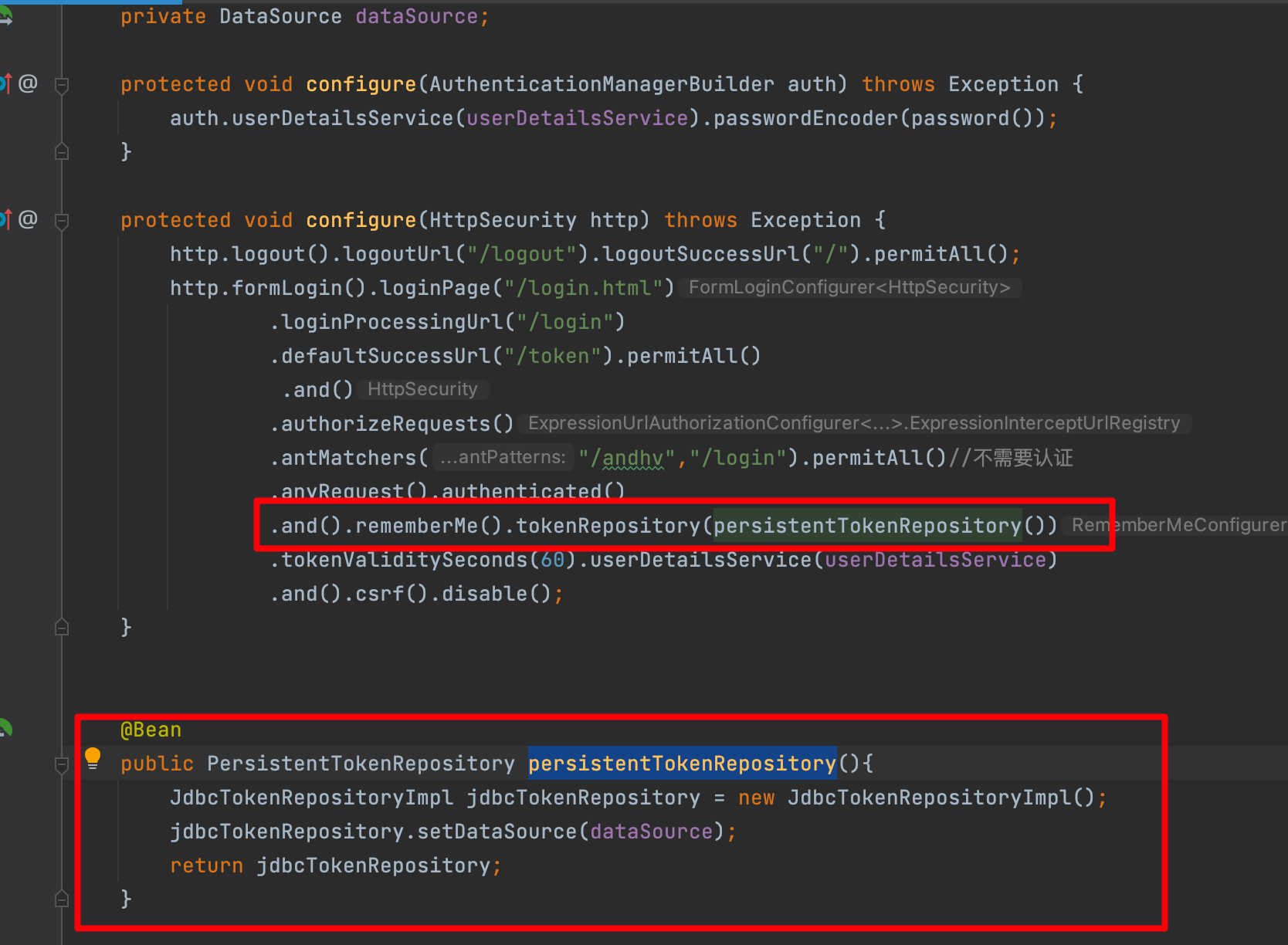
有十几个过滤器
FilterSecurityInterceptor

源码:
/*** Performs security handling of HTTP resources via a filter implementation.* <p>* The <code>SecurityMetadataSource</code> required by this security interceptor is of* type {@link FilterInvocationSecurityMetadataSource}.* <p>* Refer to {@link AbstractSecurityInterceptor} for details on the workflow.* </p>** @author Ben Alex* @author Rob Winch*/public class FilterSecurityInterceptor extends AbstractSecurityInterceptor implementsFilter {// ~ Static fields/initializers// =====================================================================================private static final String FILTER_APPLIED = "__spring_security_filterSecurityInterceptor_filterApplied";// ~ Instance fields// ================================================================================================private FilterInvocationSecurityMetadataSource securityMetadataSource;private boolean observeOncePerRequest = true;// ~ Methods// ========================================================================================================/*** Not used (we rely on IoC container lifecycle services instead)** @param arg0 ignored**/public void init(FilterConfig arg0) {}/*** Not used (we rely on IoC container lifecycle services instead)*/public void destroy() {}/*** Method that is actually called by the filter chain. Simply delegates to the* {@link #invoke(FilterInvocation)} method.** @param request the servlet request* @param response the servlet response* @param chain the filter chain** @throws IOException if the filter chain fails* @throws ServletException if the filter chain fails*/public void doFilter(ServletRequest request, ServletResponse response,FilterChain chain) throws IOException, ServletException {FilterInvocation fi = new FilterInvocation(request, response, chain);invoke(fi);}public FilterInvocationSecurityMetadataSource getSecurityMetadataSource() {return this.securityMetadataSource;}public SecurityMetadataSource obtainSecurityMetadataSource() {return this.securityMetadataSource;}public void setSecurityMetadataSource(FilterInvocationSecurityMetadataSource newSource) {this.securityMetadataSource = newSource;}public Class<?> getSecureObjectClass() {return FilterInvocation.class;}public void invoke(FilterInvocation fi) throws IOException, ServletException {if ((fi.getRequest() != null)&& (fi.getRequest().getAttribute(FILTER_APPLIED) != null)&& observeOncePerRequest) {// filter already applied to this request and user wants us to observe// once-per-request handling, so don't re-do security checkingfi.getChain().doFilter(fi.getRequest(), fi.getResponse());}else {// first time this request being called, so perform security checkingif (fi.getRequest() != null && observeOncePerRequest) {fi.getRequest().setAttribute(FILTER_APPLIED, Boolean.TRUE);}InterceptorStatusToken token = super.beforeInvocation(fi);try {fi.getChain().doFilter(fi.getRequest(), fi.getResponse());}finally {super.finallyInvocation(token);}super.afterInvocation(token, null);}}/*** Indicates whether once-per-request handling will be observed. By default this is* <code>true</code>, meaning the <code>FilterSecurityInterceptor</code> will only* execute once-per-request. Sometimes users may wish it to execute more than once per* request, such as when JSP forwards are being used and filter security is desired on* each included fragment of the HTTP request.** @return <code>true</code> (the default) if once-per-request is honoured, otherwise* <code>false</code> if <code>FilterSecurityInterceptor</code> will enforce* authorizations for each and every fragment of the HTTP request.*/public boolean isObserveOncePerRequest() {return observeOncePerRequest;}public void setObserveOncePerRequest(boolean observeOncePerRequest) {this.observeOncePerRequest = observeOncePerRequest;}}
ExceptionTranslationFilter

源码:
public class ExceptionTranslationFilter extends GenericFilterBean {
// ~ Instance fields
// ================================================================================================
private AccessDeniedHandler accessDeniedHandler = new AccessDeniedHandlerImpl();
private AuthenticationEntryPoint authenticationEntryPoint;
private AuthenticationTrustResolver authenticationTrustResolver = new AuthenticationTrustResolverImpl();
private ThrowableAnalyzer throwableAnalyzer = new DefaultThrowableAnalyzer();
private RequestCache requestCache = new HttpSessionRequestCache();
private final MessageSourceAccessor messages = SpringSecurityMessageSource.getAccessor();
public ExceptionTranslationFilter(AuthenticationEntryPoint authenticationEntryPoint) {
this(authenticationEntryPoint, new HttpSessionRequestCache());
}
public ExceptionTranslationFilter(AuthenticationEntryPoint authenticationEntryPoint,
RequestCache requestCache) {
Assert.notNull(authenticationEntryPoint,
"authenticationEntryPoint cannot be null");
Assert.notNull(requestCache, "requestCache cannot be null");
this.authenticationEntryPoint = authenticationEntryPoint;
this.requestCache = requestCache;
}
// ~ Methods
// ========================================================================================================
@Override
public void afterPropertiesSet() {
Assert.notNull(authenticationEntryPoint,
"authenticationEntryPoint must be specified");
}
public void doFilter(ServletRequest req, ServletResponse res, FilterChain chain)
throws IOException, ServletException {
HttpServletRequest request = (HttpServletRequest) req;
HttpServletResponse response = (HttpServletResponse) res;
try {
chain.doFilter(request, response);
logger.debug("Chain processed normally");
}
catch (IOException ex) {
throw ex;
}
catch (Exception ex) {
// Try to extract a SpringSecurityException from the stacktrace
Throwable[] causeChain = throwableAnalyzer.determineCauseChain(ex);
RuntimeException ase = (AuthenticationException) throwableAnalyzer
.getFirstThrowableOfType(AuthenticationException.class, causeChain);
if (ase == null) {
ase = (AccessDeniedException) throwableAnalyzer.getFirstThrowableOfType(
AccessDeniedException.class, causeChain);
}
if (ase != null) {
if (response.isCommitted()) {
throw new ServletException("Unable to handle the Spring Security Exception because the response is already committed.", ex);
}
handleSpringSecurityException(request, response, chain, ase);
}
else {
// Rethrow ServletExceptions and RuntimeExceptions as-is
if (ex instanceof ServletException) {
throw (ServletException) ex;
}
else if (ex instanceof RuntimeException) {
throw (RuntimeException) ex;
}
// Wrap other Exceptions. This shouldn't actually happen
// as we've already covered all the possibilities for doFilter
throw new RuntimeException(ex);
}
}
}
public AuthenticationEntryPoint getAuthenticationEntryPoint() {
return authenticationEntryPoint;
}
protected AuthenticationTrustResolver getAuthenticationTrustResolver() {
return authenticationTrustResolver;
}
private void handleSpringSecurityException(HttpServletRequest request,
HttpServletResponse response, FilterChain chain, RuntimeException exception)
throws IOException, ServletException {
if (exception instanceof AuthenticationException) {
logger.debug(
"Authentication exception occurred; redirecting to authentication entry point",
exception);
sendStartAuthentication(request, response, chain,
(AuthenticationException) exception);
}
else if (exception instanceof AccessDeniedException) {
Authentication authentication = SecurityContextHolder.getContext().getAuthentication();
if (authenticationTrustResolver.isAnonymous(authentication) || authenticationTrustResolver.isRememberMe(authentication)) {
logger.debug(
"Access is denied (user is " + (authenticationTrustResolver.isAnonymous(authentication) ? "anonymous" : "not fully authenticated") + "); redirecting to authentication entry point",
exception);
sendStartAuthentication(
request,
response,
chain,
new InsufficientAuthenticationException(
messages.getMessage(
"ExceptionTranslationFilter.insufficientAuthentication",
"Full authentication is required to access this resource")));
}
else {
logger.debug(
"Access is denied (user is not anonymous); delegating to AccessDeniedHandler",
exception);
accessDeniedHandler.handle(request, response,
(AccessDeniedException) exception);
}
}
}
protected void sendStartAuthentication(HttpServletRequest request,
HttpServletResponse response, FilterChain chain,
AuthenticationException reason) throws ServletException, IOException {
// SEC-112: Clear the SecurityContextHolder's Authentication, as the
// existing Authentication is no longer considered valid
SecurityContextHolder.getContext().setAuthentication(null);
requestCache.saveRequest(request, response);
logger.debug("Calling Authentication entry point.");
authenticationEntryPoint.commence(request, response, reason);
}
public void setAccessDeniedHandler(AccessDeniedHandler accessDeniedHandler) {
Assert.notNull(accessDeniedHandler, "AccessDeniedHandler required");
this.accessDeniedHandler = accessDeniedHandler;
}
public void setAuthenticationTrustResolver(
AuthenticationTrustResolver authenticationTrustResolver) {
Assert.notNull(authenticationTrustResolver,
"authenticationTrustResolver must not be null");
this.authenticationTrustResolver = authenticationTrustResolver;
}
public void setThrowableAnalyzer(ThrowableAnalyzer throwableAnalyzer) {
Assert.notNull(throwableAnalyzer, "throwableAnalyzer must not be null");
this.throwableAnalyzer = throwableAnalyzer;
}
/**
* Default implementation of <code>ThrowableAnalyzer</code> which is capable of also
* unwrapping <code>ServletException</code>s.
*/
private static final class DefaultThrowableAnalyzer extends ThrowableAnalyzer {
/**
* @see org.springframework.security.web.util.ThrowableAnalyzer#initExtractorMap()
*/
protected void initExtractorMap() {
super.initExtractorMap();
registerExtractor(ServletException.class, throwable -> {
ThrowableAnalyzer.verifyThrowableHierarchy(throwable,
ServletException.class);
return ((ServletException) throwable).getRootCause();
});
}
}
}
UsernamePasswordAuthenticationFilter

源码:
public class UsernamePasswordAuthenticationFilter extends
AbstractAuthenticationProcessingFilter {
// ~ Static fields/initializers
// =====================================================================================
public static final String SPRING_SECURITY_FORM_USERNAME_KEY = "username";
public static final String SPRING_SECURITY_FORM_PASSWORD_KEY = "password";
private String usernameParameter = SPRING_SECURITY_FORM_USERNAME_KEY;
private String passwordParameter = SPRING_SECURITY_FORM_PASSWORD_KEY;
private boolean postOnly = true;
// ~ Constructors
// ===================================================================================================
public UsernamePasswordAuthenticationFilter() {
super(new AntPathRequestMatcher("/login", "POST"));
}
// ~ Methods
// ========================================================================================================
public Authentication attemptAuthentication(HttpServletRequest request,
HttpServletResponse response) throws AuthenticationException {
if (postOnly && !request.getMethod().equals("POST")) {
throw new AuthenticationServiceException(
"Authentication method not supported: " + request.getMethod());
}
String username = obtainUsername(request);
String password = obtainPassword(request);
if (username == null) {
username = "";
}
if (password == null) {
password = "";
}
username = username.trim();
UsernamePasswordAuthenticationToken authRequest = new UsernamePasswordAuthenticationToken(
username, password);
// Allow subclasses to set the "details" property
setDetails(request, authRequest);
return this.getAuthenticationManager().authenticate(authRequest);
}
/**
* Enables subclasses to override the composition of the password, such as by
* including additional values and a separator.
* <p>
* This might be used for example if a postcode/zipcode was required in addition to
* the password. A delimiter such as a pipe (|) should be used to separate the
* password and extended value(s). The <code>AuthenticationDao</code> will need to
* generate the expected password in a corresponding manner.
* </p>
*
* @param request so that request attributes can be retrieved
*
* @return the password that will be presented in the <code>Authentication</code>
* request token to the <code>AuthenticationManager</code>
*/
@Nullable
protected String obtainPassword(HttpServletRequest request) {
return request.getParameter(passwordParameter);
}
/**
* Enables subclasses to override the composition of the username, such as by
* including additional values and a separator.
*
* @param request so that request attributes can be retrieved
*
* @return the username that will be presented in the <code>Authentication</code>
* request token to the <code>AuthenticationManager</code>
*/
@Nullable
protected String obtainUsername(HttpServletRequest request) {
return request.getParameter(usernameParameter);
}
/**
* Provided so that subclasses may configure what is put into the authentication
* request's details property.
*
* @param request that an authentication request is being created for
* @param authRequest the authentication request object that should have its details
* set
*/
protected void setDetails(HttpServletRequest request,
UsernamePasswordAuthenticationToken authRequest) {
authRequest.setDetails(authenticationDetailsSource.buildDetails(request));
}
/**
* Sets the parameter name which will be used to obtain the username from the login
* request.
*
* @param usernameParameter the parameter name. Defaults to "username".
*/
public void setUsernameParameter(String usernameParameter) {
Assert.hasText(usernameParameter, "Username parameter must not be empty or null");
this.usernameParameter = usernameParameter;
}
/**
* Sets the parameter name which will be used to obtain the password from the login
* request..
*
* @param passwordParameter the parameter name. Defaults to "password".
*/
public void setPasswordParameter(String passwordParameter) {
Assert.hasText(passwordParameter, "Password parameter must not be empty or null");
this.passwordParameter = passwordParameter;
}
/**
* Defines whether only HTTP POST requests will be allowed by this filter. If set to
* true, and an authentication request is received which is not a POST request, an
* exception will be raised immediately and authentication will not be attempted. The
* <tt>unsuccessfulAuthentication()</tt> method will be called as if handling a failed
* authentication.
* <p>
* Defaults to <tt>true</tt> but may be overridden by subclasses.
*/
public void setPostOnly(boolean postOnly) {
this.postOnly = postOnly;
}
public final String getUsernameParameter() {
return usernameParameter;
}
public final String getPasswordParameter() {
return passwordParameter;
}
}
过滤器是如何加载的
DelegatingFilterProxy
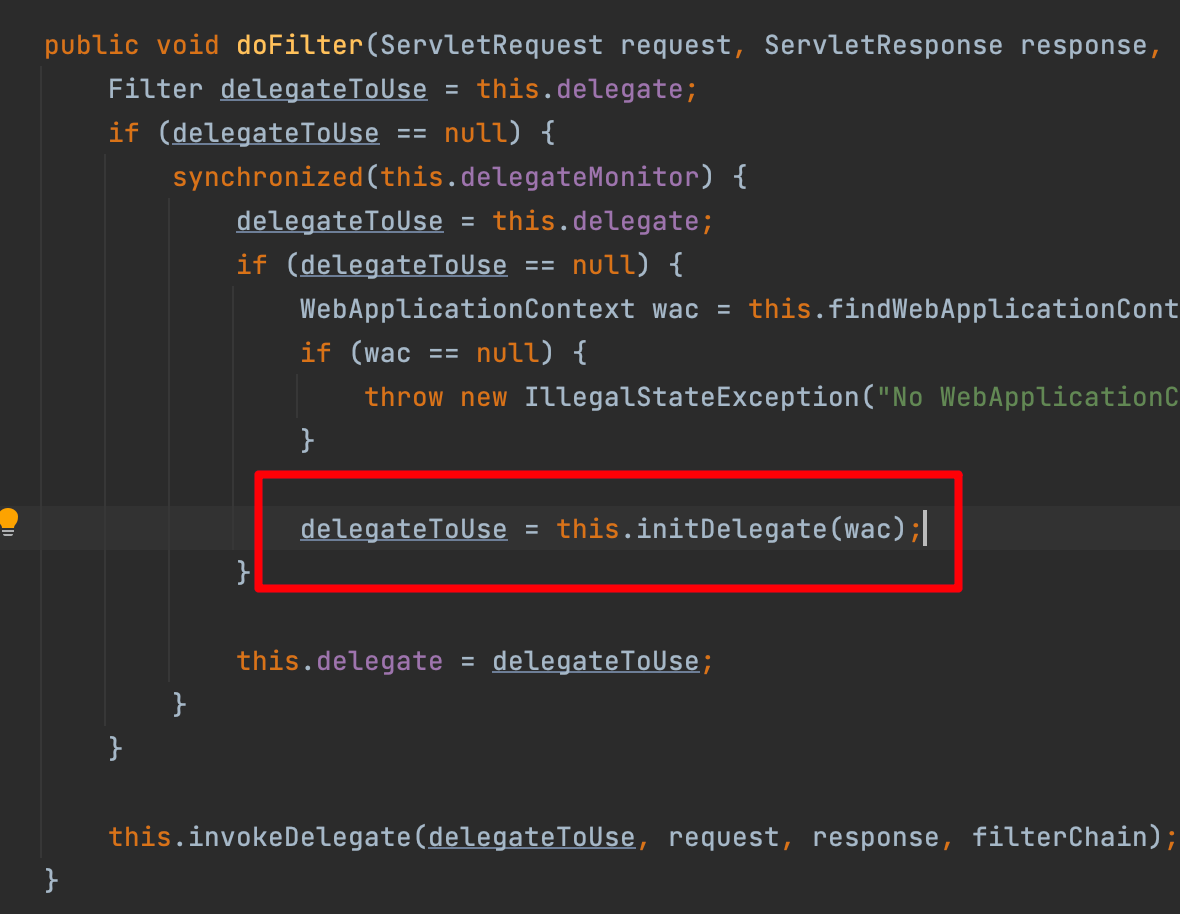


WebSecurityConfiguration

FilterChainProxy

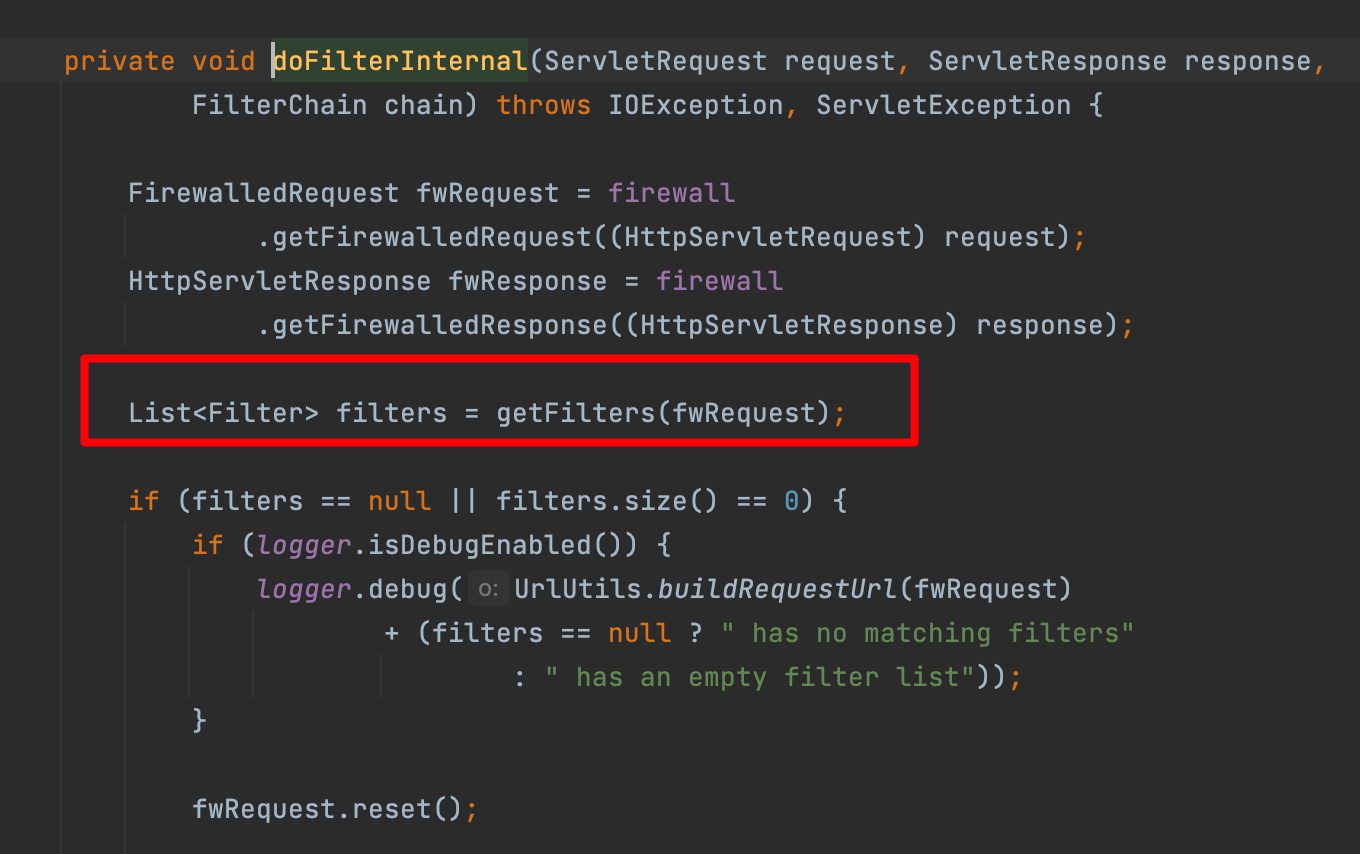
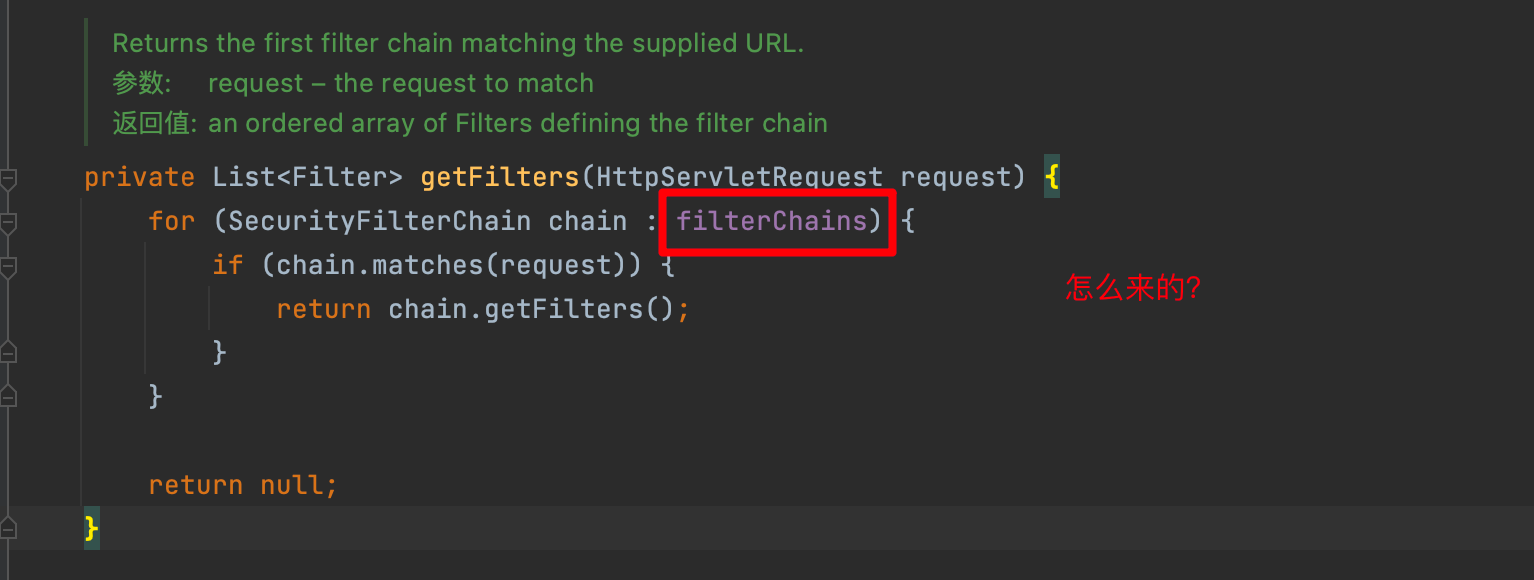
WebSecurityConfiguration下的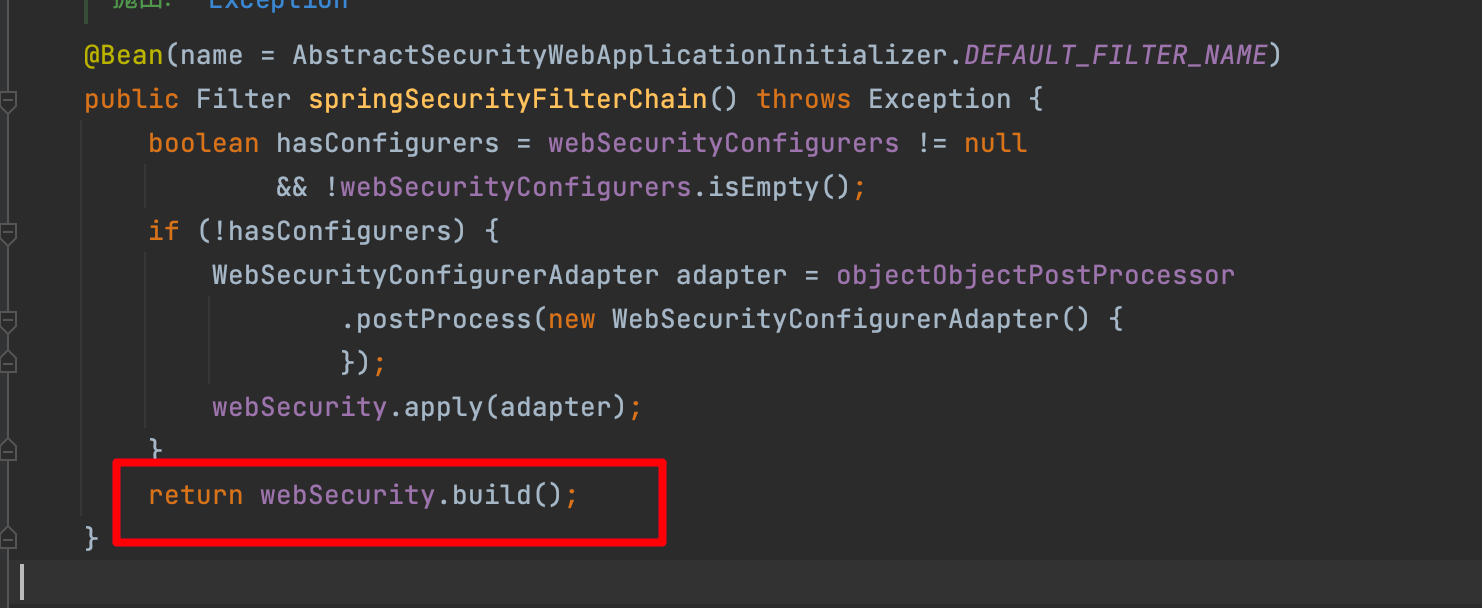
�
记住我流程
